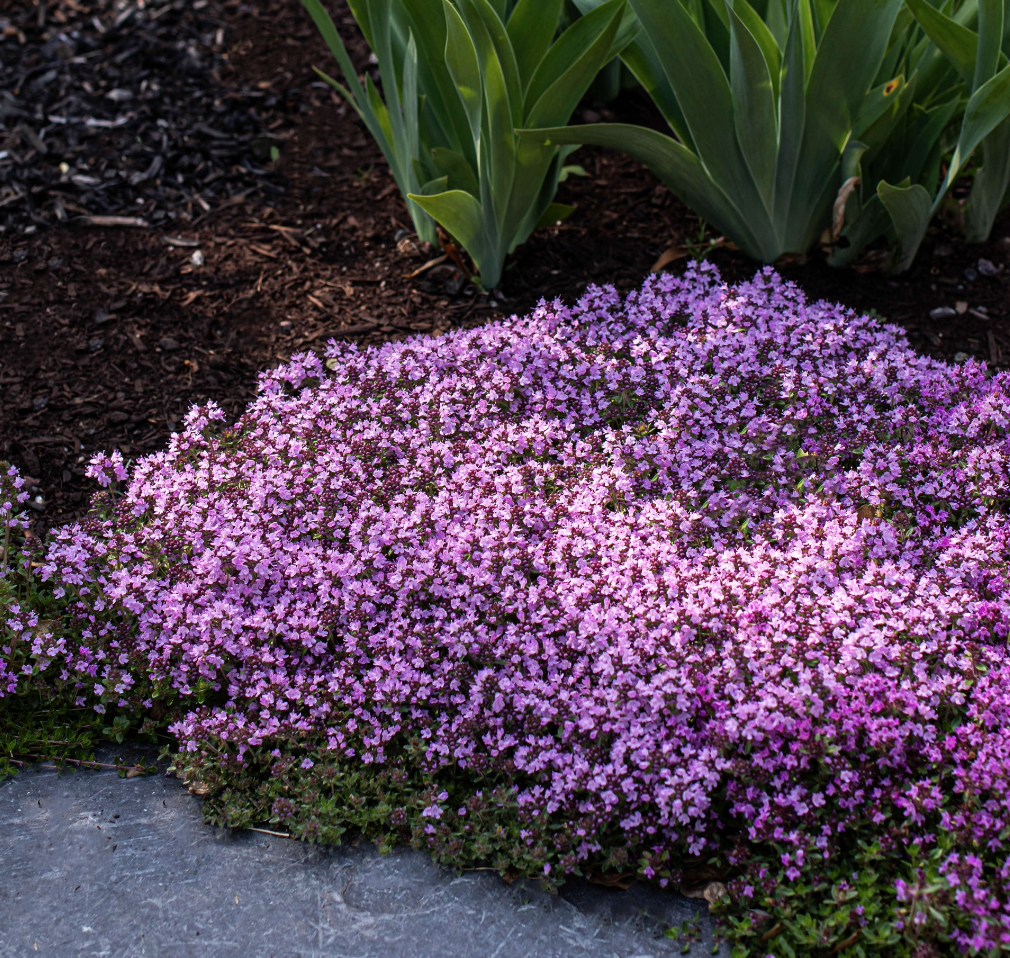Tame Them! The Best Herbs to Naturally get rid of those unwanted weeds in your outdoor space
Weeds, the ultimate garden villains, love to grow in all those unwanted areas. But what if you could fight back—with style and scent? Enter the world of herbal landscaping, where a handful of strategically chosen plants can outsmart weeds, beautify your yard, and even give the air an incredible scent.
In Southern California with those year-round mild temperatures create a planting paradise, incorporating herbs to control weeds is as practical as it is enjoyable.
Here’s your guide to choosing the best herbs for this purpose, planting them at the perfect time, and creating your weed-controlling masterpiece.
Why Herbs?
Herbs are nature’s multitaskers. They form dense mats or grow tall enough to shade the ground, blocking weeds from reaching the sunlight to thrive. Plus, many herbs repel pests, attract pollinators, and of course the fact that you can use them in your kitchen as a delicious add-on to your meals.
Best Herbs for Weed Control
1. Creeping Thyme
Why it works: This low-growing herb spreads quickly, forming a dense mat that smothers weeds. Plus, it releases a delightful fragrance when stepped on.
Best planting time: Late winter to early spring (February to March) or fall (September to November).
2. Chamomile
Why it works: Roman chamomile’s ground-hugging habit makes it a natural weed deterrent. Bonus: its flowers can be used for calming teas.
Best planting time: Spring (March to May) or fall (September to November).
3. Lavender
Why it works: Lavender’s bushy growth habit suppresses weeds, while its scent deters unwanted pests.
Best planting time: Spring (March to May).
4. Mint
Why it works: Mint’s aggressive growth habit is perfect for outcompeting weeds. Just keep it in check with a buried barrier to prevent it from taking over.
Best planting time: Spring (March to May) or fall (September to November).
5. Oregano
Why it works: This robust herb forms a dense ground cover, shading out weeds and providing a handy kitchen staple.
Best planting time: Spring (March to May) or fall (September to November).
DIY: Planting an Herb-Filled Weed Barrier
Materials You’ll Need:
Herb plants or seeds of your choice.
Garden trowel.
Compost or organic soil amendment.
Mulch (optional, for added weed suppression).
Landscape fabric (optional, for extra-weed-prone areas).
Watering can or hose with a gentle spray nozzle.
Let’s get started:
1. Plan Your Space:
Choose sunny areas of your lawn or garden where weeds tend to thrive. Most herbs prefer 6-8 hours of sunlight daily.
Sketch a layout of your herb garden, mixing taller herbs like lavender with low-growers like creeping thyme.
2. Prepare the Soil:
Clear the area of existing weeds.
Loosen the top 6-8 inches of soil using a garden fork or tiller.
Mix in compost to enrich the soil and improve drainage.
3. Optional: Lay Landscape Fabric:
For heavy weed infestations, lay landscape fabric over the soil. Cut small holes where you’ll plant your herbs.
4. Plant Your Herbs:
Dig holes twice the width of the root ball for each herb plant.
Place the herb in the hole, ensuring the root crown is level with the soil surface.
Backfill with soil, pressing gently to remove air pockets.
5. Water Thoroughly:
Water your herbs through after planting.
6. Add Mulch (Optional):
Spread a 2-inch layer of mulch around your herbs to lock in moisture and add an extra layer of weed defense.
7. Maintain Your Garden:
Water as needed, ensuring the soil stays moist but not soggy.
Prune herbs regularly to encourage bushy growth and prevent weeds from sneaking in.
There you go! Enjoy your new friends along with theri scents and versatile functions.





